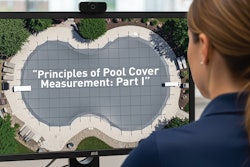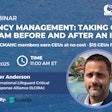
State regulatory agencies in Florida, Texas and North Carolina are in the process of adopting new rules and guidelines for the installation, operation and maintenance of “artificial swimming lagoons.” The advance of new regulations is the direct result of installations from Crystal Lagoons, the innovative Chilean company that has garnered worldwide attention and acclaim for its daring and outlandishly large lagoons, which are the size of lakes but largely function like massive swimming pools.
RELATED: 66 Million Gallons of Sparkling Water — How Do They Do It?
With the first installations introduced in the U.S. over the past few years, and several more in the planning stages or already under construction, regulators have previously referred to building and health standards for ponds and lakes. The new rules, while somewhat different in each state, effectively create a new category for man-made lagoons designed primarily for swimming and other aquatic activities, which feature recirculated and treated water.
The march toward the new regulations started in Texas back in 2017, when state lawmakers drafted legislation that created the new category and mandated the state draft new rules pertaining to lagoon construction, operation and maintenance.
According to language in the bill from the Executive Commissioner of the Texas Health and Human Services Commission on behalf of the Department of State Health Services, “The new rules provide construction requirements, sanitation procedures and operational requirements for artificial swimming lagoons in accordance with good public engineering practices, to protect the health and safety of users, and to reduce to a practical minimum the possibility of drowning or of injury to bathers.”
A draft of the Texas regs was released in fall 2018 for comment, an official draft was published September 13 and is anticipated to go into effect by the end of the year, pending a final round of public comments.
Florida is also moving forward with its own set of new rules. Unlike Texas, the new Florida regulations apply only to the lagoon construction and will go into effect in December 2020 as part of the state’s 2020 Building Code. Future rules pertaining to lagoon operation and maintenance are expected to be developed through the Florida Department of Health, although no timeline has been set.
North Carolina is developing its rules through the state’s Commission for Public Health. Passed as a legislative amendment in August, the state is moving forward to develop rules for construction as well as operation and maintenance, similar in some respects to the Texas rule structure. In North Carolina, lagoons are being defined as a subcategory of public swimming pool.
PHTA has played a role in these discussions in all three states, with additional organizations and industry professionals chiming in with input based on existing pool standards where applicable.
“PHTA has participated in and monitored the development of the regulations underway in both Texas and Florida, and looks forward to doing the same now in North Carolina,” says Jennifer Hatfield, PHTA’s director of government affairs. “In doing so, we have been able to work with Crystal Lagoons as well as other industry groups such as the Texas Pool & Spa Coalition and Florida Swimming Pool Association,” she explains. “Our goal is to ensure regulators have clear guidance to ensure a safe and enjoyable experience for those who utilize these lagoons. In some cases, that may be the same as what our national codes and APSP standards require for pools, and in other cases it must deviate.”
“With more states seeking guidance,” she adds, “PHTA is looking to work with Crystal Lagoons and other interested parties on model language that can be considered in national code adoptions like the ISPSC and/or MAHC, and as a template for states to consider.”
For its part, Crystal Lagoons is pledging full cooperation with state and federal regulators. According to Javiera de la Cerda, the company’s R&D and IP director, “We understand that new technologies and innovations face challenges related to regulations, which is why we have adopted a proactive standpoint in which we work closely with the health departments and officials to introduce our concept and technology and find a way to be properly classified within each state's regulations.”










































